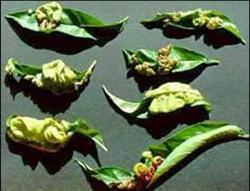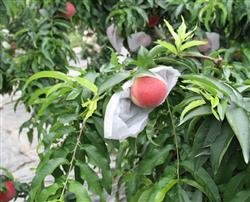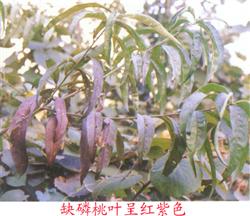Opinions on Prevention and Control of Diseases and insect pests in Peach trees in early Spring

With the gradual warming of the weather in early spring, all kinds of peach diseases and insect pests began to recover, breed and multiply. The prevention and control of peach diseases and insect pests in early spring can effectively control the occurrence and spread of peach diseases and reduce the occurrence base of peach pests. In this paper, the occurrence and harm of main peach diseases and insect pests and their control suggestions in early spring are briefly introduced as follows: 1. Occurrence and harm of peach anthracnose: it is the main fungal disease of peach trees in this area. The mycelium overwintered on the diseased branches and stiff fruits, produced spores in the early spring of the next year, infected the fruiting branches, and then spread to the flowers and fruits one after another, aggravating the damage. In severe cases, a large number of fruit branches withered and the fruits rotted. There are three disease processes in a year in Shanghai, which are found to occur on the fruiting branches from mid-March to early April, on young fruits in the first and middle of May, and in the fruit ripening stage in June and July. The young fruit stage suffered the most in the whole year. Control methods in early spring: ⑴ cut off the withered branches, stiff fruits and stumps, or the first diseased branches before and after bud germination to flowering to eliminate the source of overwintering disease and prevent re-infection; ⑵ strengthen drainage, increase phosphorus and potassium fertilizer, strengthen tree potential, and avoid leaving branches too dense and too long; spray 1 ∶ 1 ∶ Bordeaux solution 1-2 times when peach buds germinate (prohibited after leaf expansion). 2. Occurrence and harm of peach bacterial perforation disease: it is a bacterial disease, overwintering on the diseased shoot, overflowing bacterial pus in the diseased part in the following spring, and transmitted by wind, rain and insects. Invaded by stomata, lenticels, etc. It usually occurs after leaf spreading in the middle of April. the annual peak is the Meiyu season from May to June and the typhoon season from August to September. It mainly harms the leaves and fruits of peach trees, resulting in leaf perforation and fruit cracking. The method of prevention and control in early spring is the same as peach anthracnose. 3. Occurrence and harm of peach root cancer disease: it is a bacterial disease, which mainly damages the root and root neck, forming a tumor, resulting in serious poor growth of peach trees, short plants, poor fruit quality, and serious death of the whole plant. The pathogenic bacteria live in cancer tissue or soil and can be spread by Rain Water runoff or irrigation water and diseased seedlings and invade through wounds. Prevention and control methods in early spring: ⑴ strengthened soil management, reasonable fertilization, improved soil, enhanced tree potential; ⑵ strengthened orchard inspection, dug up the topsoil of suspected diseased plants, scraped off or thoroughly scraped the roots with KG84 after discovering the disease, and dug out and burned serious plants. 4. occurrence and harm of peach gum disease: it is a physiological disease of peach tree, which mainly occurs on branches, new shoots, leaves and fruits, resulting in rough bark, cracking, not easy to heal, and serious gum flow. Tree potential is weak, and it is easy to become the spawning site of peach longicorn beetles and accelerate the death of peach trees. The phenomenon of gum flow can occur during the whole growth period of peach trees, but it occurs most frequently in rainy seasons such as Meiyu and Taifeng period, and more frequently in old trees and weak trees. The prevention and control methods in early spring should strengthen the comprehensive management, promote the normal growth and development of the tree, and enhance the tree potential. 5. Occurrence and harm of mulberry scale: also known as mulberry shield shell insect and peach white shell insect, is an important pest of peach trees. The fertilized female adults overwintered on the branches, and there were three generations a year in Shanghai. The overwintering female began to lay eggs in mid-April, and the occurrence periods of the three generations of nymphs were in the first and middle of May, July and September, respectively. Female adults and nymphs harm the new shoots, branches and fruits of peach trees, seriously weakening the tree, greatly reducing fruit yield and varieties, and even withering the whole tree. Control method in early spring: spray Baume 5 degree stone sulfur mixture or 100 times oil emulsion before sprouting to eliminate overwintering female adults. When the insect body is dense into a piece, it can be removed with a hard brush before spraying to facilitate the penetration of the liquid. 6. Occurrence and harm of red-necked longicorn beetles: commonly known as saw tree Lang, is an important pest of peach trees. The larvae overwintered in the injured parts of the branches, usually completing a generation every 3 years. The mature larvae pupate in May, the adults occur in mid-late June, lay eggs from late June to early July, and the larvae begin to overwintering in late October. The larvae eat the cortex and xylem of the branches of peach trees, which weakens the tree potential and shortens its life. In severe cases, peach trees die. Prevention and control method in early spring: after finding the injured site according to the branches and ground decay and insect dung, stab the larvae with iron wire.
- Prev

Peach bagging has new technology.
Peach fruit bagging technology can effectively prevent the harm of diseases and insect pests, reduce the rate of diseases and insect pests, reduce pesticide residues and harmful dust pollution, improve the grade and commodity rate of fruit, make the fruit surface smooth and beautiful, and increase the commercial added value of fruit at the same time. The fruit bags used in the past are basically made by artificial paste of waste newspapers. Bag gauge.
- Next

Prevention and treatment of phosphorus deficiency symptoms in peach trees
1. The effect of phosphorus on the growth and development of peach trees phosphorus has two effects on the growth and development of peach trees. On the one hand, phosphorus can enhance tree potential, maintain healthy growth, promote flower formation, early fruiting, promote fruit and seed ripening, increase sugar content and improve fruit quality. On the other hand, it can improve the ability of peach trees to the external environment.
Related
- Moge, come on! The staff of the peasant association in the producing area of cantaloupe were frightened when the crowd gathered.
- Causes and Solutions of low Fruit setting rate of Apple
- Symptoms and control measures of passion fruit virus disease
- Fruit growing lesson: how do apple orchards keep high yields?
- Can you build orchards in the mountains? What are the pros and cons?
- How to manage the coloring period of Crisson grape?
- This paper introduces the processing technology of two kinds of fig products.
- How much is a month for retired teachers in rural areas by 2020?
- How can strawberry planting increase sugar content? We should pay attention to management in many aspects.
- What are the cultivation techniques on how to improve the yield of golden fruit?

